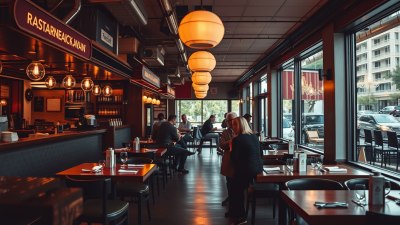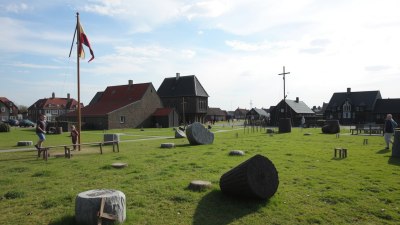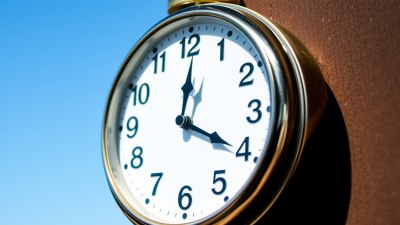Why Deciding Where to Eat Takes Longer Than the Meal Itself
Explore the reasons behind the lengthy process of choosing where to eat compared to the actual meal duration.

Deciding where to eat can often feel like a monumental task, one that seems to drag on for an eternity. While the actual meal takes just a fraction of the time, the deliberation involved in choosing a restaurant can take longer than the dining experience itself. Why does this happen? Various factors contribute to this phenomenon, ranging from personal preferences and external influences to the overwhelming number of options available. In this article, we will explore the various reasons why the process of deciding where to eat can be so prolonged.
The Overabundance of Choices
One of the primary reasons for the lengthy decision-making process is the sheer volume of dining options available today. In urban areas, the availability of different cuisines, restaurant styles, and price points can make the choice overwhelming. With so many restaurants to consider—from fast food chains to gourmet dining establishments—picking a place can feel like searching for a needle in a haystack. This paradox of choice can lead to decision fatigue, causing individuals or groups to prolong the decision-making process in an attempt to make the 'right' choice.
Personal Preferences
Individuals often have different tastes and dietary restrictions, making the decision more complex. If you’re dining with friends or family, the challenge amplifies as each person may have their own preferences. Someone might prefer Italian, while another may want sushi, and yet another may require gluten-free options. Balancing these requests can create a prolonged discussion about where to go, as individuals try to find common ground that satisfies everyone’s desires.
Social Dynamics
Social dynamics play a significant role in the decision-making process when it comes to choosing a restaurant. The desire to please others, avoid conflict, or assert personal choices can influence how long it takes to decide. In group settings, some individuals may take charge and suggest options, while others may be hesitant to voice their preferences or counter-suggestions. The interplay of personalities can lead to extended discussions, debates, and even disagreements, all of which contribute to longer wait times before settling on a venue.
Fear of Regret
The fear of making the wrong choice can also lead to a longer decision-making process. People often worry about how the meal will turn out and whether they will enjoy it. This fear of regret may cause individuals to overanalyze their options, seeking the perfect restaurant that meets all their needs and expectations. They may spend excessive time reading reviews, asking friends for recommendations, or even scrolling through menus online. This indecision is often exacerbated by social media, where people can easily compare their choices with the experiences of others.
Influence of Technology
In today’s digital age, technology influences food choices in numerous ways. Apps and websites providing reviews, ratings, and images of food can make us more reluctant to commit to a choice. The constant exposure to new dining options, trendy spots, or highly rated restaurants can create pressure to explore rather than settle on the familiar. Consequently, what might start as a quick decision turns into a lengthy search for the ‘best’ place, as diners are often caught in a cycle of analysis paralysis.
Cultural Factors
Cultural norms around dining can also lengthen the decision process. In some cultures, the act of dining out is a social event that is taken seriously, where significant thought is given to the choice of restaurant. This contrasts with cultures where dinner may be a more casual affair. In cultures that emphasize communal dining and sharing experiences, individuals can spend considerable time discussing options to ensure that they choose a place that fosters a good social atmosphere.
The Role of Time
Time itself can also be a factor in the decision-making process. Considerations about the time of day, the day of the week, and timing for reservations can influence where a group ultimately decides to eat. For instance, if it's a Friday evening, popular restaurants may have long wait times, which can necessitate a different choice. The pressure of time can both help prompt quicker decisions or, conversely, complicate the decision-making process as diners weigh various factors against the clock.
Health Consciousness
The modern emphasis on health and wellness adds another layer of complexity to dining decisions. With growing awareness about nutrition, more people are becoming health-conscious and considering dietary impacts when choosing where to eat. Many individuals now scrutinize menus for calorie counts, ingredients, and health benefits. This careful analysis can extend the discussion about where to dine, particularly if some people are focused on health while others may seek indulgent options.
Dining Experiences Beyond the Meal
For many individuals, where to eat is not solely about food quality; it’s also about the overall dining experience. Many diners consider ambiance, service, and overall vibe as essential elements in their decision-making process. Choosing a place that offers a specific type of atmosphere—be it casual, romantic, energetic, or elegant—can often take longer, as diners deliberate whether the aesthetic and experience will match their expectations and occasion.
Conclusion
The extended decision-making process found in choosing where to eat stems from various factors, including the overwhelming abundance of options, personal preferences, social dynamics, fear of regret, technological influences, cultural considerations, and health consciousness. Each of these elements intertwines, creating a complex web that often delays the moment of selection. Ultimately, while the meal itself may take a mere fraction of the time, the journey to find the perfect restaurant is a reminder of the various factors that influence choice, making it a unique experience in its own right.











